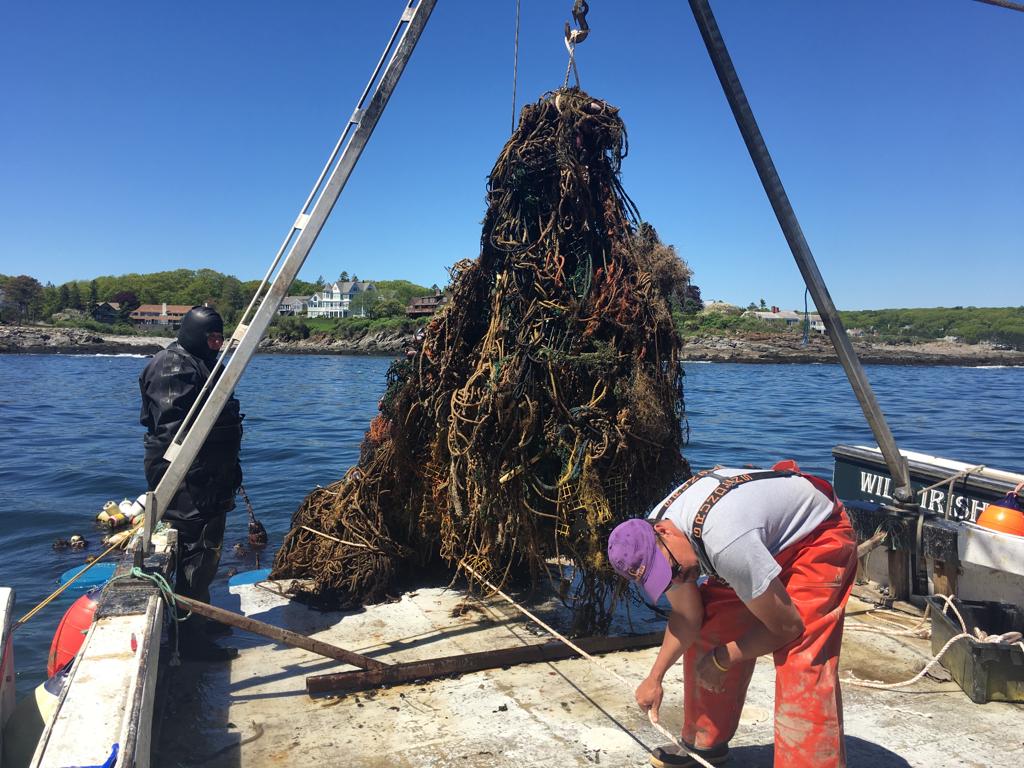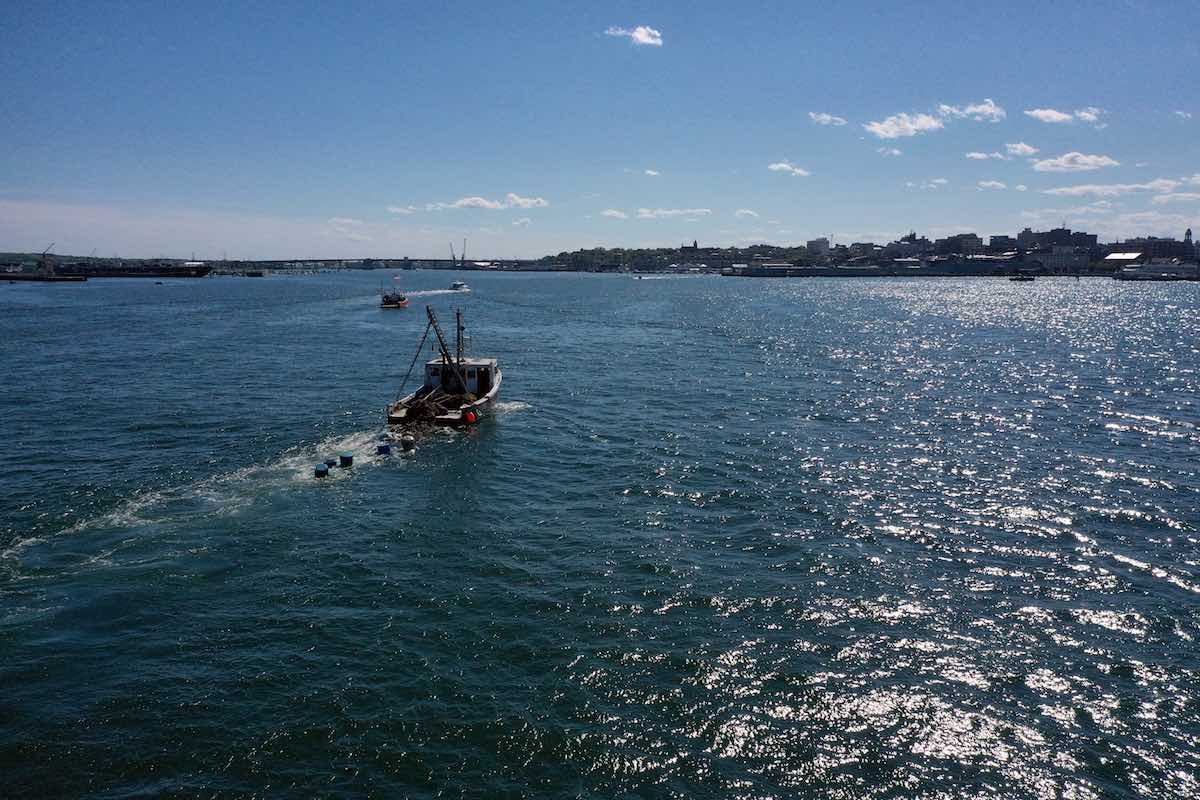Goodness Gracious, Great Balls of Ghost Gear
Published by Ocean Conservancy
As a kid, I had such an active imagination that as soon as my feet left the diving board at my neighborhood pool I would focus on one thing and one thing only: speed-paddling to the ladder for fear that something was lurking beneath.
Looking back, I mostly chalk that up to having watched the movie Jaws way too young (I remember secretly sitting on the staircase and peeking through the banister spindles into the living room where my parents had it playing on VHS). But after a recent trip to Portland, Maine, I can think of a far more serious threat than any shark (or sea serpent, or crocodile…): ghost “gear balls”.
Gear balls are huge, tangled masses of ghost gear—lost, abandoned or otherwise derelict fishing gear that includes nets, ropes, lines, traps and other equipment. No one knows for sure how much fishing gear is currently floating around in the ocean, but conservative estimates suggest it’s something to the tune of 800,000 tons, which could have real impacts on ocean health. Research published by Ocean Conservancy in 2016 found that ghost gear was the deadliest form of marine debris. It continues to entrap and kill ocean animals long after it is lost at sea, and since much of it is made of plastics, it never truly goes away.


Worse, no one benefits from ghost gear in the ocean: in addition to harming wildlife, it affects fishers, seafood companies and the coastal economies that depend on a healthy ocean. The Global Ghost Gear Initiative (GGGI)—a consortium of conservationists and public and private sector allies tackling ghost gear, globally—was founded precisely to bring all of these key groups together for the purpose of crafting and implementing solutions that prevent, reduce and remove ghost gear from the marine environment. Earlier this year, as part of our commitment to address the largest sources of ocean plastic pollution—from too many, unnecessary single-use plastics to inadequate waste collection and recycling systems around the world—Ocean Conservancy took the helm of the Global Ghost Gear Initiative as Lead Partner.
I witnessed the power of the GGGI platform firsthand earlier this month while aboard the Fishing Vessel Murphy’s Law, in the Gulf of Maine. Working with GGGI member Gulf of Maine Lobster Foundation (GOMLF), local lobstermen and expert salvage divers, we set out to remove what we thought would be a 5,000-pound gear ball from the seafloor just off Cape Elizabeth Lighthouse. Supported by 11th Hour Racing, these removal projects are critical to eliminating the threat of ghost gear to wildlife, fisheries and the Maine economy.
Join the fight for trash free seas
Fishers had already identified the gear ball and local divers had scouted out the underwater area beforehand. But it’s one thing to scout out and another to actually attempt the removal. The surface temperature hovered at 50 degrees Fahrenheit—well below what any recreational SCUBA diver typically endures in a wetsuit. For the mission, two divers wrapped themselves in layer after layer of warm clothing, then slipped into dry suits before jumping into the frigid waters. Shuttling air tanks and other tools, they worked throughout the morning to float the gear ball to the surface by strapping large lift bags and 55-gallon barrels to the mass of gear. Occasionally they would come up to the surface and shout updates to the crew on deck, asking for different size winches and cables. By mid-day, the bins had slowly made their way to the surface, bringing with them the gear ball that had been lurking below
As the bins neared us, I peered over the end of the boat. The water visibility was low, and I caught only a murky glimpse of brownish rope. I imagined a round ball—like a tumbleweed—floating beneath the stern. But as the fishers and divers worked to hook the gear ball to the boat’s built-in crane, it became clear that we had vastly underestimated its size. The engine revved and the crane began reeling in what could only be described as a rope and net monster, swollen with sea water and fighting to stay in its lair.


That monster turned out to be a leviathan weighing more than 20,000 pounds. This made lifting it onto the boat impossible, so instead the lobstermen and divers expertly fashioned a “tow” and secured the ball to the stern of the boat. Once dockside and craned onto dry land, the 10-ton amalgam of nets, ropes, lines and lobster trap fragments was hacked, sawed and deconstructed into manageable pieces that could be loaded into a dumpster. The entire load was then transported just down the road and fully recycled at EcoMaine.
Unfortunately we can’t skip the straw, bag the ban or reuse our way out of the ghost gear that currently haunts our ocean. But through the GGGI—as I saw firsthand on June 6th aboard the F/V Murphy’s Law—all is not lost (pun intended).
The post Goodness Gracious, Great Balls of Ghost Gear appeared first on Ocean Conservancy.
Read the full article at: https://oceanconservancy.org/blog/2019/06/28/great-balls-ghost-gear/


